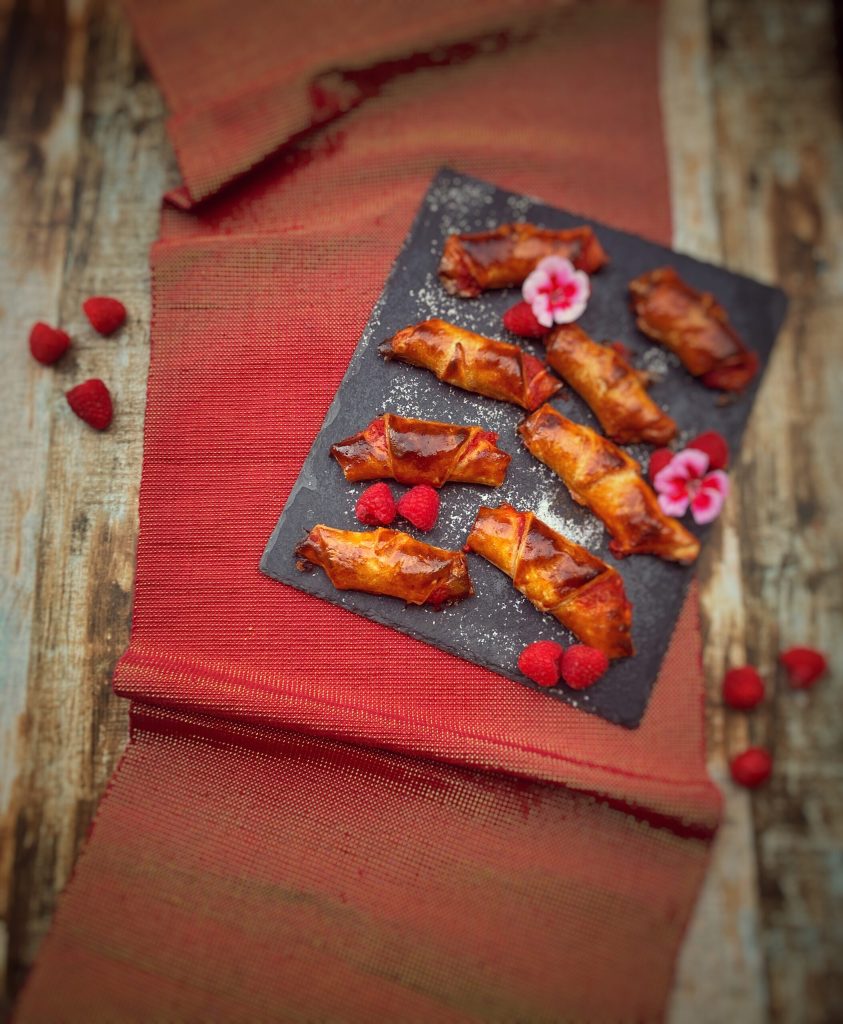Rugelach: a baked filled pastry originating from the Jewish communities of Poland.
It is popular in Israel, commonly found in most cafes and bakeries, and very popular among diaspora Jews.
It can be prepared with sour cream dough (like mine) or cream cheese.
The various fillings include: raisins, nuts, cinnamon, chocolate, marzipan, poppy seeds, or fruit preserves that are rolled inside.
Rogal świętomarciński is a croissant with a filling of white poppy seeds, vanilla, chopped dates or figs, raisins, and cream; it is covered with a sugar glaze and sprinkled with peanuts, traditionally prepared in Poznań for St. Martin’s Day (11/11).
Rogaliki is the Russian name for rugelach.
To conclude…
My intention was to make a Polish dessert that is somewhat like a croissant, but the RUGELACH I made, filled with raspberry jam, CANNOT be defined as a Polish dessert, but should be defined as a Jewish dessert born from the Polish Jewish community.
They were the stars of ViaggiandoMangiando on air – Around the World in 80 Plates on June 27, 2022 (video HERE) with other recipes from the section:

- Difficulty: Easy
- Cost: Inexpensive
- Rest time: 2 Hours
- Preparation time: 10 Minutes
- Portions: 6 people
- Cooking methods: Oven
- Cuisine: Jewish
- Seasonality: All seasons
Ingredients
- 2 cups flour
- 7 oz butter
- 5 oz sour cream
- 1 jar raspberry jam
- 1 pinch salt
- 1 egg
Steps
For the dough: knead the flour with the butter, cold sour cream, and salt.
Form a ball dividing it into two parts.
Let it rest in the refrigerator for 2 hours.
Roll out the dough and create triangles.
Fill with raspberry jam and roll like a croissant.
Brush with beaten egg with a few drops of water.
Bake in the oven at 350°F for 20 minutes.

To learn more about Jewish communities:
FAQ (Questions and Answers)
Can Rugelach be defined as a kind of Jewish croissant?
Yes, it can be defined as a kind of Jewish croissant, but with some key differences.
Similarities:
Crescent shape similar to the croissant.
Rolled from triangles of dough.
Often filled (chocolate, jam, nuts, cinnamon…).
Differences:
The dough of Rugelach is more like a soft pastry dough, often with cream cheese or sour cream in the dough.
It is not a flaky dough like that of the croissant.
Does not require long rising or butter lamination.
Origin:
Rugelach are part of the Ashkenazi Jewish tradition (Central-Eastern Europe), but also common in Austria and Poland.
So yes, the expression “Jewish croissant” can be used informally or descriptively, even if technically it is a different pastry.

